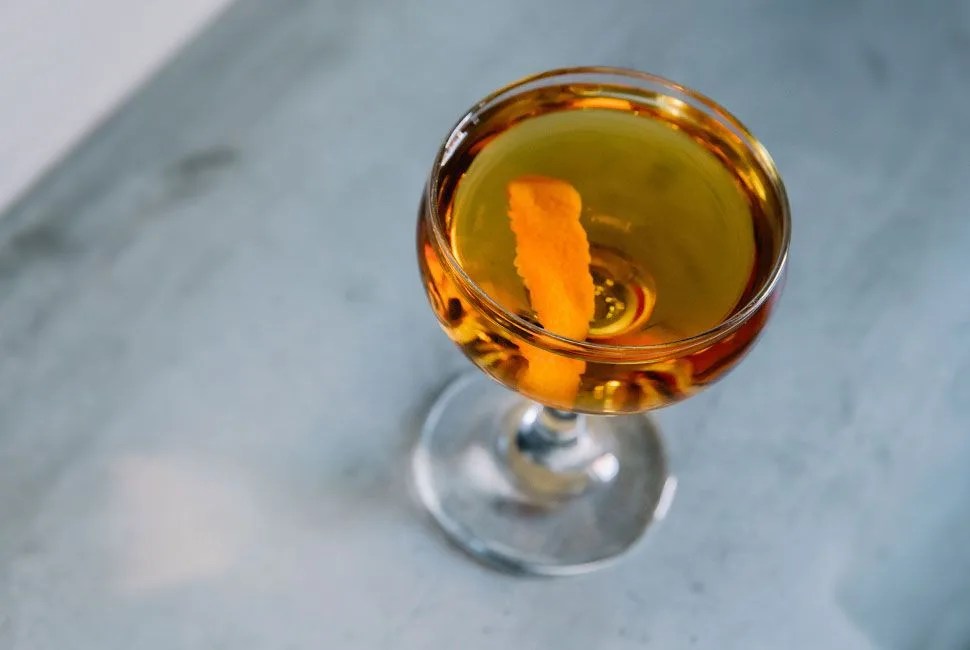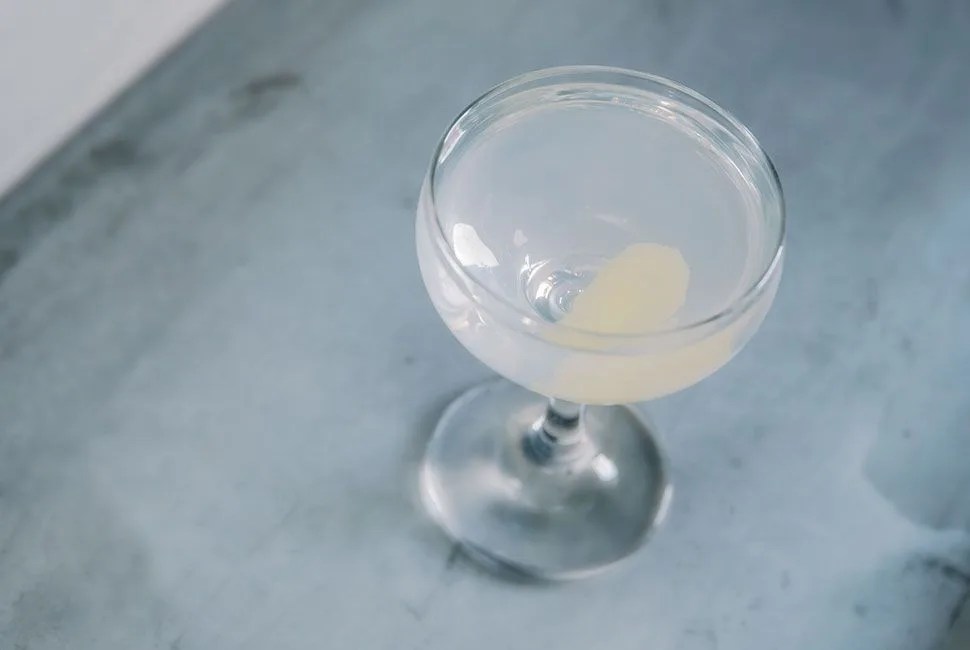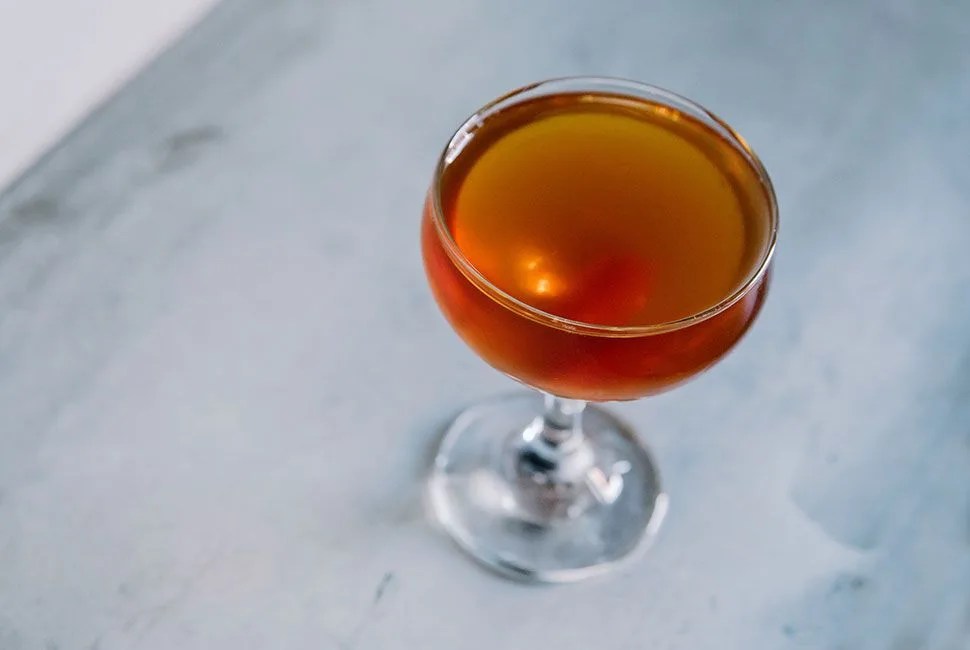“It’s hard to improve on cocktails that have been working on for 150 years,” said Matt Walker, the beverage director of Lo Res in Williamsburg, Brooklyn. Lo Res is a casual bar operated by the movie theater it shares a wall with, and its drinks tend toward playful puns — “The Ranch” and “Bulleitproof Vest” are served to patrons seeing Midnight Special. The bar and Walker himself exemplify what he sees as a growing trend in bartending: less intimidating complexity, fewer fine-dining atmospheres; more fun, more laughs. Now that serious whiskey and cocktail bars have sprung up in trendy neighborhoods around the country, the pendulum has begun to swing back.
Just before the 5 o’clock crowd rolled in, we visited Walker to have him explain the martini, a true American creation, in a way that’s both causal and highly educated, typical of the surrounding neighborhood. While there are multiple accounts of how exactly the martini came to be, Walker subscribes to the school of thought that the word “martini” first showed up in Harry Johnson’s 1888 “Bartender’s Manual” as a typo of the word “martinez.” The martinez originated a bit early, in a bar near to the Californian town of Martinez, and, with the help of sweet vermouth and gum syrup, it was a sweeter version of the martini we know today.
This sweet martini, or martinez, eventually gave way to the dry martini, which was the “first cocktail ever on the books not using any kind of sugar,” says Walker. And then, a little later the first drink popularized by a female bartender came on the scene: the Hanky Panky. Created in the early 1900s by Ada Coleman at the American Bar in London, it’s similar to a martinez, but instead of bitters, it manages to tame the licorice flavor of Fernet Branca.
Below find modern day recreations of the classic martinez, dry martini and Hanky Panky. It’s time to shake up the bone-dry martini — gin over ice — with a look back at the classics.
Matt Walker, the Beverage Director

Background?
Writer who fell into bartending to make ends meet. Drink-making took him to Vermont, the Virgin Islands and the Hamptons, before landing him in Brooklyn.



